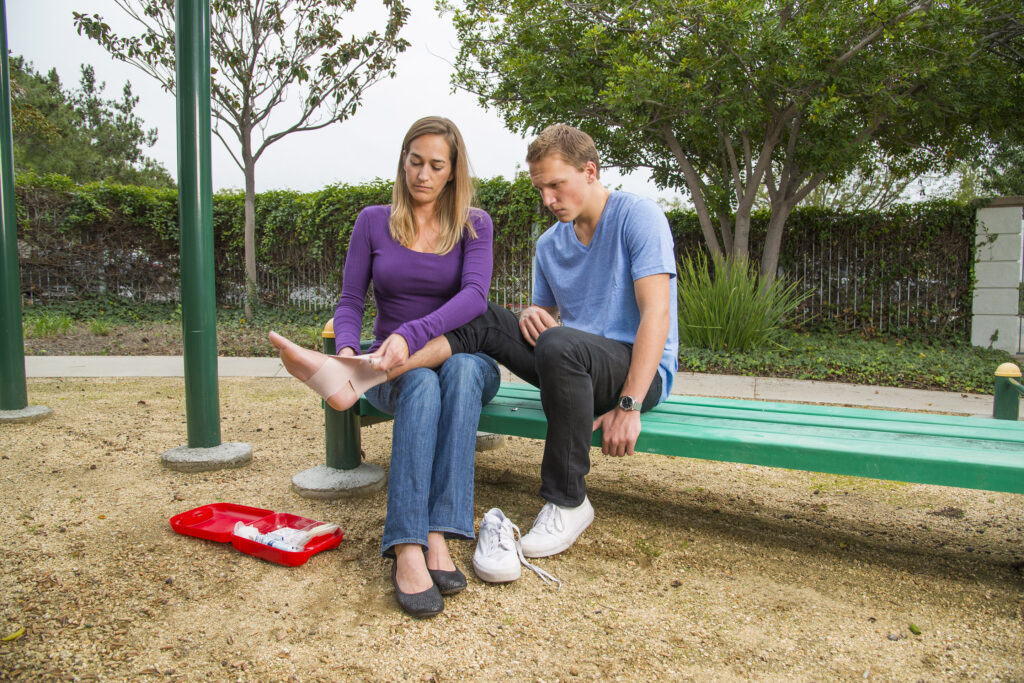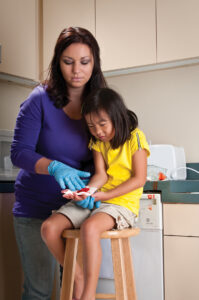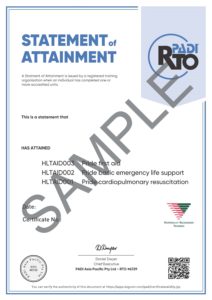Accidents and injuries can occur anywhere – at home, at the workplace, while driving or while participating in sports events. While hopefully, you won’t need this kit for anything more than bumps and scrapes, it’s best to be prepared.
A First Aid Kit can give you peace of mind in a medical emergency. Being prepared could help you save a life or help someone. A basic first-aid kit checklist might include:

1. Adhesive Dressings
Commonly known as Band-aids, this type of dressing comes in various sizes. They are used mainly for covering minor cuts or skin injuries.
2. Antiseptic wipes
Antiseptic wipes are ideal for cleaning and sanitising skin when you don’t have soap and water on hand. These are ideal for treating minor cuts and scrapes before applying a dressing.
3. Bandages
Bandages are a must-have in your kit as they can help cover wounds and burns, reduce swelling, or control bleeding.
Crepe bandages provide light support for sprains and strains
4. Gauze Pads
Gauze pads will provide a cover to prevent infections, but they also can be used to stem blood flow in an emergency.
Have gauze pads in your kit, preferably in large sizes, as they can be cut smaller
5. Eye wash
This type of saline solution can help to clear out the eye If a foreign object becomes lodged and soothe the discomfort.
6. Disposable gloves
Having disposable gloves will ensure that you can treat an open wound without risk of cross-infection through blood or bodily fluids. Keep an extra pair in the kit just to be safe.
7. Scissors
Put a small but sharp pair of scissors for cutting bandages, tape and other materials.
8. Thermal or foil blankets
This helps in managing the body temperature of the person when in shock.
9. Instant ice pack
These are used for people experiencing swelling or skin reactions and need something cool to help reduce the pain due to strains, sprains, inflamed areas, or insect bites.
Ice packs come in large or small sizes, depending on which part of the body you want to use them on.
10. Tweezers
Pointed tweezers are easier to use if removing splinters or anything sharp injected into the skin.
Bonus: A notepad and pen
It’s a good idea to include this in your kit as it will remind you to write down symptoms and details of what caused it. This information can be important for doctors or paramedics to know if the situation requires further assistance.
These suggestions are suitable for building a general-purpose kit. Once you have assembled a basic first aid kit, you can customise it according to the plans and where you are heading.
For example, for a Scuba diving trip, don’t forget to have a sharp pair of scissors if you need to cut someone’s wetsuit off. If you are in an area where marine stingers are present, include vinegar to pour over potential stings.
If you go for a camping trip, add heavy crepe bandages, antiseptic cream, anti-inflammatory medication and antihistamines.
Equip yourself with the knowledge and skills you need to assist in emergencies by completing first aid training with PADI RTO. The course provides comprehensive training, which will equip you with the skills and knowledge to handle a wide range of situations and give you the confidence to deal with them quickly, correctly, and efficiently. With PADI RTO Trainers located Australia-wide, there’s no need to wait.

Tags: First Aid, PADI, PADI RTO, Provide First Aid, RTO Trainer, Training

